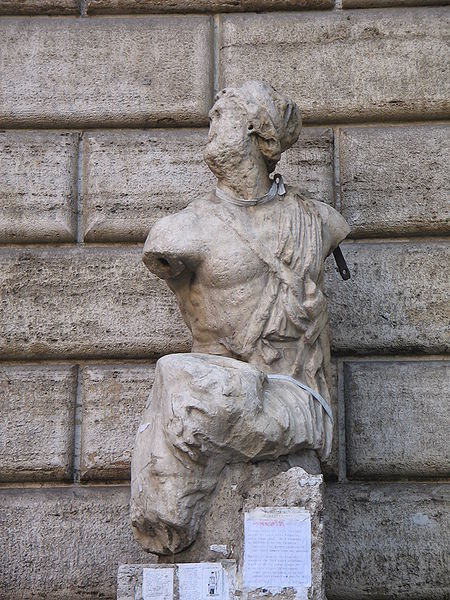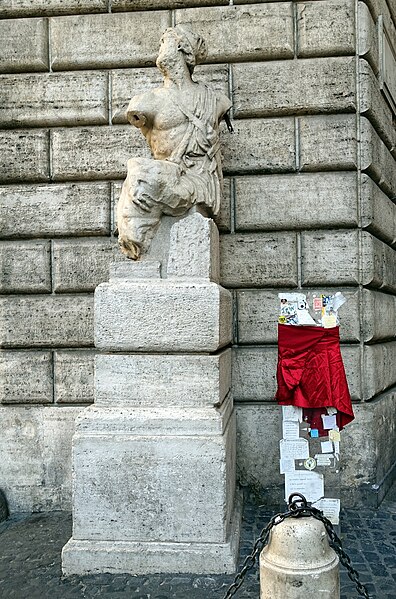The Pasquino Group is a group of marble sculptures that copy a Hellenistic bronze original, dating to ca. 200–150 BCE. At least fifteen Roman marble copies of this sculpture are known. Many of these marble copies have complex artistic and social histories that illustrate the degree to which improvisatory "restorations" were made to fragments of ancient Roman sculpture during the 16th and 17th centuries, in which contemporary Italian sculptors made original and often arbitrary and destructive additions in an effort to replace lost fragments of the ancient sculptures.
Menelaus supporting the body of Patroclus, in the Loggia dei Lanzi, Florence, Italy
The Pasquino fragment still shows the warrior's eroded hand on the limp torso
Terracotta reduction by Juan Adán Morlán, as Priam supporting the body of Hector (Royal Academy of Fine Arts of San Fernando, Madrid)
Pasquino or Pasquin is the name used by Romans since the early modern period to describe a battered Hellenistic-style statue perhaps dating to the third century BC, which was unearthed in the Parione district of Rome in the fifteenth century. It is located in a piazza of the same name on the northwest corner of the Palazzo Braschi ; near the site where it was unearthed.
Pasquino
Modern pasquinades in Italian on the base of the statue
Pasquino statue 2017. Postering on the statue is prohibited. "Pasquinades" must be placed on a side board.
Pasquino in 1550 by Nicolas Béatrizet







